Selecting a humidifier type that fits your living environment and requirements is crucial. Humidifiers vary significantly in performance, ease of maintenance, and humidifying capacity depending on their type. Instead of searching for the “perfect humidifier,” it’s essential to find one that aligns with your needs and space.
Below, we’ve outlined the key considerations and characteristics of different types of humidifiers to help you make an informed choice.
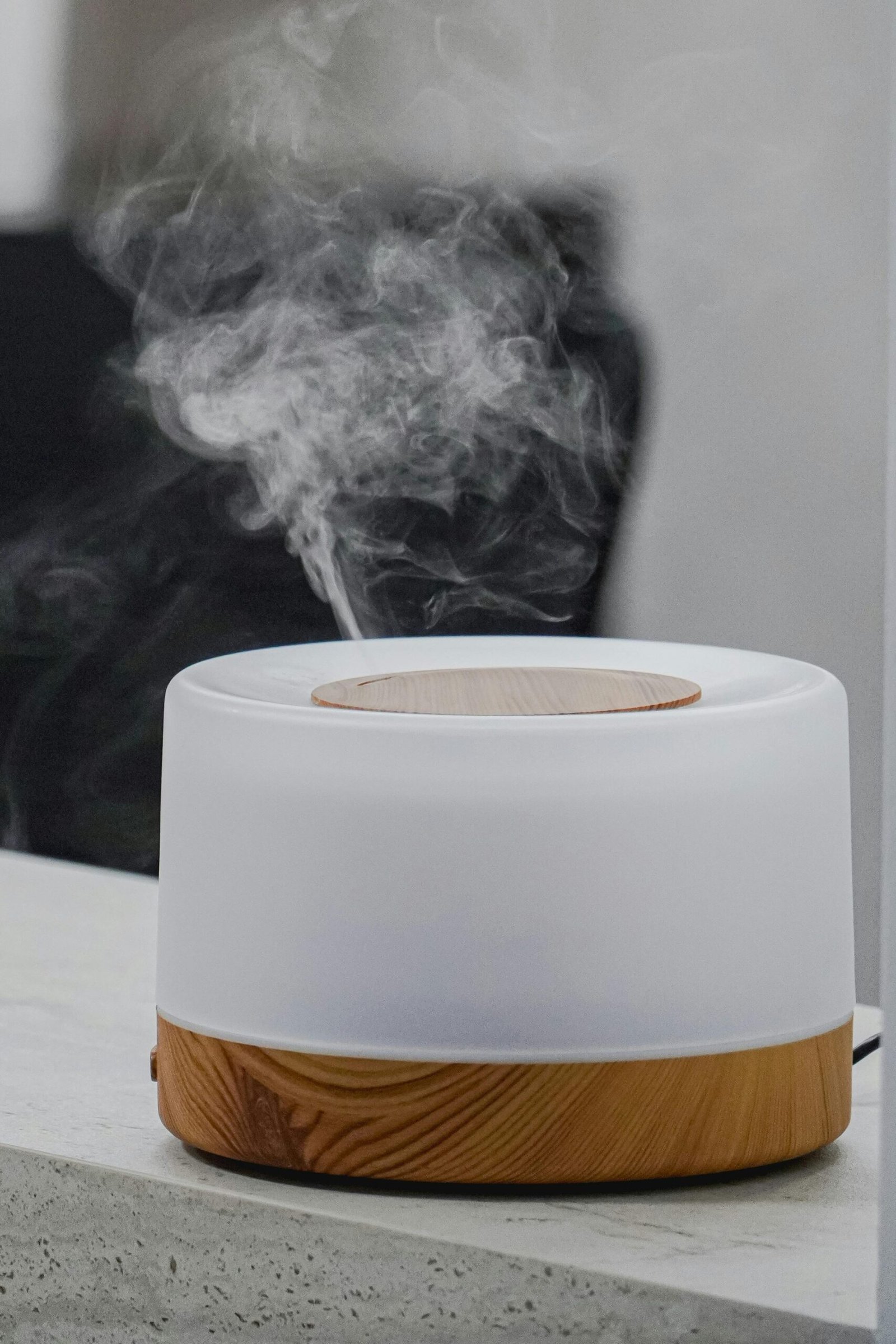
Key Factors in Selecting a Humidifier Type
When selecting a humidifier type, keep these four factors in mind:
- Humidification Method: The primary types—ultrasonic, warm mist, evaporative, and hybrid—each have distinct mechanisms, benefits, and drawbacks.
- Water Dispersion and Safety: Different methods release either water droplets or steam, which impacts health and safety.
- Ease of Cleaning: Maintaining hygiene is critical for humidifiers since they directly affect the air you breathe.
- Humidifying Capacity and Runtime: Choose a humidifier that matches your space size and offers a long runtime without frequent refills.
Types of Humidifiers: Features and Benefits
1. Ultrasonic Humidifiers
- How It Works: Uses ultrasonic vibrations to break water into fine mist droplets.
- Pros: Fast humidification, energy-efficient, and typically affordable.
- Cons: Requires daily cleaning to avoid bacteria and mineral dispersion; mist may carry impurities that can reach the lungs, potentially causing respiratory issues like asthma or pneumonia.
- Best For: Personal spaces like small bedrooms or office desks, especially if you can commit to regular cleaning.
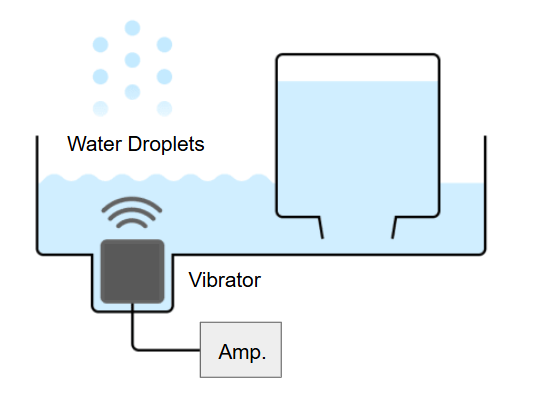
2. Warm Mist (Steam) Humidifiers
- How It Works: Heats water with an electric element to release purified steam.
- Pros: Hygienic steam output, ideal for winter as it slightly warms the room.
- Cons: Higher energy consumption, risk of burns, and potential safety hazards around children.
- Best For: Larger spaces like living rooms or when hygienic humidification is a priority.
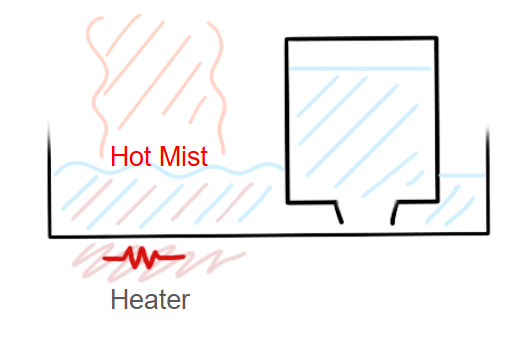
3. Evaporative Humidifiers
- How It Works: Uses a fan to blow air through a wet filter, naturally evaporating water into the air.
- Pros: Safe and prevents over-humidification.
- Cons: Filter replacement can be costly; improper maintenance may lead to odors or decreased performance.
- Best For: Open or large spaces requiring even humidity distribution.
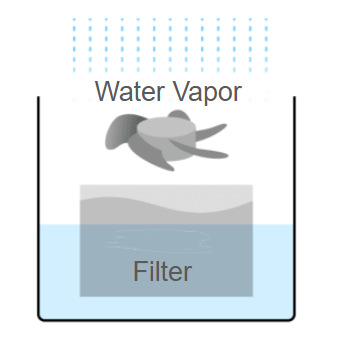
4. Hybrid Humidifiers
- How It Works: Combines ultrasonic and warm mist technologies for faster and sterilized humidification.
- Pros: Balances the benefits of both methods with added sterilization.
- Cons: More expensive and still requires thorough cleaning.
- Best For: Users seeking high humidification performance and enhanced hygiene
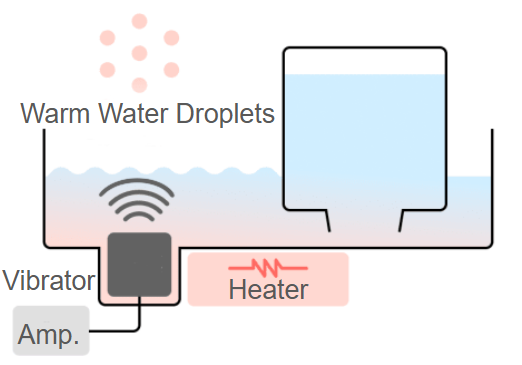
Safety and Water Dispersion
Ultrasonic Humidifiers Release Impurities, Requiring Thorough Cleaning. The tragic humidifier disinfectant incident (BBC article) has heightened awareness of hygiene issues in humidifiers. However, many people still hold misconceptions or baseless concerns due to inaccurate information. Understanding the unique hygiene challenges of humidifiers, which naturally involve water use, is crucial for safe and effective operation.
Bacteria Multiply Rapidly in Water
Bacteria thrive in water and multiply quickly. This means that the water tank of a humidifier will always contain bacteria, which can increase over time.
In some countries, the water treatment process involves chlorine to inhibit bacterial growth. However, when water is exposed to air or when the tank becomes contaminated, bacterial growth accelerates. Regular cleaning and maintenance of humidifiers are essential to address this issue.
Differences in Dispersion: Water Droplets vs. Steam
Humidifiers release moisture in two primary forms:
- Water Droplets (Ultrasonic): Ultrasonic humidifiers release liquid droplets that contain bacteria, minerals, and other impurities. These droplets are typically 1–5 µm in size, large enough to carry impurities such as bacteria (0.01–1.5 µm).
- Steam (Warm Mist/Evaporative): Steam consists of pure water vapor (H₂O) and is free from impurities. The particle size of steam is approximately 100 times smaller than bacteria, preventing impurities from binding to it.
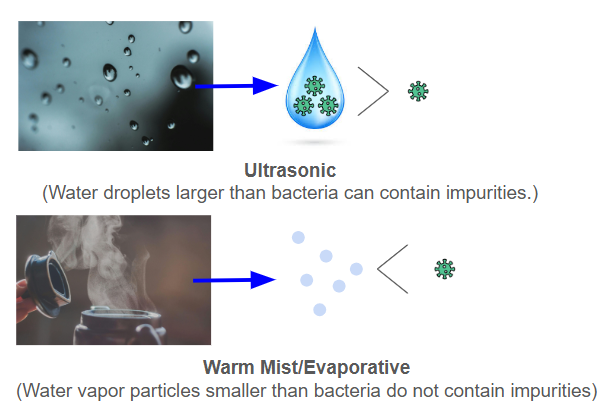
Ultrasonic Humidifiers Can Deliver Impurities to the Lungs
Ultrasonic humidifiers disperse fine particles of water and impurities that can travel deep into the lungs. This may cause respiratory issues such as asthma, pneumonia, and colds. Notably, all fatalities in the humidifier disinfectant tragedy involved ultrasonic humidifiers.
Does this mean ultrasonic humidifiers should not be used?
Not necessarily. Ultrasonic humidifiers are affordable, versatile, and capable of producing high levels of moisture. To ensure safe use:
- Clean and sterilize the device daily.
- Avoid adding any substances to the water.
When used correctly, ultrasonic humidifiers can be a safe and effective option.
What Happens to Impurities in Warm Mist and Evaporative Humidifiers?
In warm mist and evaporative humidifiers, impurities remain in the water tank or filter and are not released into the air.
Over time, this can cause contamination, leading to unpleasant odors and hygiene concerns. To prevent this:
- Replace the water and rinse the tank daily.
- Sterilize the tank and filter once or twice a week.
Ease of Cleaning
1. Ultrasonic Humidifiers
- Cleaning Frequency: Daily cleaning recommended.
- Difficulty: Some models have complex internal structures, making cleaning more challenging.
2. Warm Mist Humidifiers
- Cleaning Frequency: Weekly cleaning suffices due to the sterilizing effect of boiling water.
- Ease: Models with a detachable water tank or simple structure are easier to clean.
3. Evaporative Humidifiers
- Cleaning Frequency: Weekly cleaning for filters and water tanks.
- Ease: Open water tanks are easier to clean, but filter replacements can add to maintenance costs.
Humidifying Capacity and Runtime
1. Required Humidifying Capacity
- A general guideline is 40–60ml per square meter.
For example:- A 10-square-meter room = 400–600ml/hr capacity required.
2. Runtime
Select a humidifier with a runtime of at least 8 hours to avoid frequent refills, especially for overnight use. This depends on the water tank capacity and humidifying rate.
Conclusion
When selecting a humidifier type, consider your specific needs and environment. Here’s a quick guide:
- Ultrasonic: Cost-effective and portable; best for small spaces and those willing to clean daily.
- Warm Mist: Hygienic and cozy; ideal for large spaces but with higher energy usage.
- Evaporative: Safe and consistent; perfect for families or large rooms but requires filter maintenance.
- Hybrid: High-performance and versatile; great for those who prioritize both efficiency and hygiene.
Use this guide to find the best humidifier for your space and enjoy a comfortable, well-humidified environment!



Pingback: Best Humidifier for Bedroom : Venta Airwasher - freedoug.com